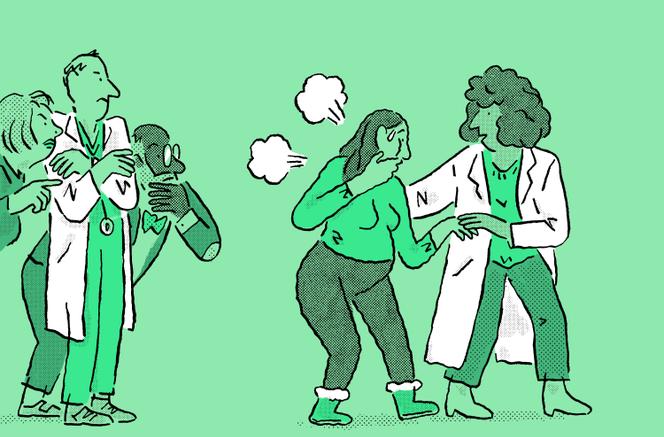


"During my postdoctoral training, I was pregnant with my second child. I suffered from nausea and vomiting so severe that I couldn't eat, drink or move without vomiting violently," said Marlena Fejzo. The genetic biologist, who works in the Department of Obstetrics and Gynecology at the University of Southern California, suffered from hyperemesis gravidarum – from the Greek emesis, "vomiting," and the Latin gravidarum, "pregnant." The condition causes nausea and vomiting and affects 30% of pregnant women. It leads to weight loss, and even dehydration and nutrient deficiencies, not to mention the psychological repercussions. The most severe forms affect 2% to 3% of women. "On a day-to-day basis, it causes suffering and hampers both personal and professional life," said Elie Azria, obstetric gynecologist, head of the maternity unit of the Paris Saint-Joseph hospital group.
"I took up to seven different medications at the same time, but nothing helped. In the second trimester, I lost my baby," continued Fejzo. "Despite this horrible suffering, my doctor told me I was just trying to get attention. I was so weak that I didn't try to argue. But, when I was back on my feet, I decided to dedicate my life to finding the cause of this disease."
Back in 1999, Fejzo was 31 years old. In 2018, she made the first link between a hormone, GDF15, and this nausea. Five years later, her work, undertaken with a consortium of international researchers (Cambridge, Edinburgh, Glasgow and Kelaniya, Sri-Lanka), published Wednesday, December 13, in Nature, has uncovered how GDF15 works. Genetic analyses, blood tests on thousands of patients, and studies on human cells and mice were carried out to conduct this research.
The GDF15 hormone is present in the human body. When a woman is pregnant, the fetus produces a high dose of this hormone, for reasons as yet unknown. Researchers have found that the level of this hormone rises steadily during the first 12 weeks of pregnancy, and is higher in women who suffer from nausea than in those who do not.
The research goes beyond this correlation. "This new study suggests that lower levels of GDF15 before pregnancy lead to hypersensitivity to the hormone," said Fejzo. The risk of suffering from hyperemesis gravidarum is inversely proportional to the level of GDF15 before pregnancy. The lower the level before conception – the researchers identified a rare mutation in the gene encoding this hormone – the greater the risk of nausea and vomiting; the higher the level, the lower the risk of hyperemesis gravidarum. "For the first time, this interaction between mother and fetus has helped to explain why some women suffer from hyperemesis gravidarum during pregnancy and others don't," she pointed out. Similarly, the researchers highlighted that women with beta-thalassemia – a genetic hemoglobin disease leading to anemia that usually presents high levels of GDF15 – rarely experience nausea during pregnancy.
You have 55% of this article left to read. The rest is for subscribers only.
